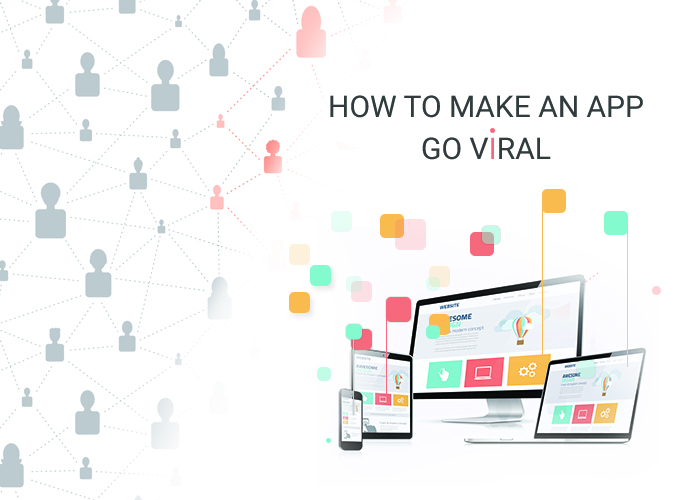Viral is one of the most important elements that can create an app success. If your app has gone viral, you can economize your marketing costs but still be able to achieve a great number of users and monetize on them.
However, as we can see, it’s hard to determine what makes something viral or not. Sometimes you build a product with functions which you think will help it go viral but it doesn’t and vice versa. However, knowing the THEORY behind the viral mechanism will surely increase your app chance of becoming hugely popular. Learning from successful past case studies is also very important to achieve that same level of success.
This blog is to help you answer the mystery behind the virality of some apps and what they have in common.
1. It is based on the 7 deadly sins
People like things that make them feel good. Let’s take Facebook as an example. The main reason why people like Facebook is because it allows them to dissect others’ lives and satisfy their own judgmental attitudes), besides expressing their self-centeredness. Facebook is like a stage and people can become actors on that stage. Facebook gives people what they innately desire so they love it and cannot get rid of it.
A key feature of a viral app should be adapted to 1+ of the 7 deadly sins: give your users fame (pride), sex (lust), help them pass time (sloth) and give people information that they want (curiosity). Your app will only be desirable if it can tap into people’s psychology and satisfy the needs that most people have.
2. Shareable
An app can only go viral if it the content is shareable. You are wrong if you think being shareable only means having a highly visible share button. Shareable means the app content is worthy to be shared, which presents a good image of the person who shares it with their friends. For example, a literature quiz you just got a high score from.
To create viral content, you need to answer the question: If I share this content, what does it say about ME?
Because it’s more about your users than about your app.
Another way to get people to share your content is to offer incentives or rewards. What will I get if I share this content? There are many ways to offer rewards to users. For example, create an event in which people who share your content will get a prize. Or offer more of your app value for referrals. Like how Snapchat increases spaces for referrals and PayPal pay those who refer new customers.
Make the sharing action easy and effortless by creating highly visible one-click buttons for sharing to multiple platforms.
Like I mentioned earlier in my blog, get users to share your app, but with mutual benefit: On your side, create a viral loop that will get your app more users; on the side of the person who shares the content – a good image about themselves.
3. Create a viral loop
A viral loop is not an ambiguous hope that people will talk about you. As Josh Jeffryes describes in his Slideshare presentation, a viral loop is a “self-fueling action loop that drives users to create more users, which increase engagement and existing users”.
There are many benefits of having a viral loop:
- Your app will be promoted by a trustworthy source (users’ friends). Remember people trust those they know more than you.
- Economize the cost of acquisition per user
- It’s an exponential process that will get you an awful lot of users
There’s a magic formula for you to work out if your app is viral or not: VC= N X P1 X P2
- N = average number of new users each active user invites
- P1 = proportion of invited users who become active users
- P2 = proportion of users who invite other people
If you VC is <1, then you’re not viral. If it’s >1, then your app is doing a pretty good job.
Let’s take a look at the Candy Crush Saga game.
Candy Crush Saga is probably one of the most popular tile-matching games of all time and has been near the top of app store since 2012.
So how does Candy Crush Saga create its viral loop? The viral loop of Candy Crush Saga is based on rewards: when you share, you get something in return, for example, more lives, more levels to play or help.
Another important thing to notice is how the game uses the language. Instead of using words such as “invite” or “share”, Candy Crush Saga uses the word “ask”, which is more active and familiar with the language that people use to talk to their friends, like “asking friends for a helping hand”. This word encourages you to tell your friends about it. In addition to this, the “ask” friends for help action is placed at a much heightened emotional state (when you’ve just lost), which makes it much more likely for you to perform the action just to win.
This viral loop is also very natural and unforced. “Lives” are something you will surely run out so asking your friends doesn’t look like spams but a natural action to progress with the game.
4. Retain users
The longer users use your app, the more likely they are to recommend it to their friends or talk about it. Retaining users is just as important as getting users to download your app. App installation should only be the starting point, not the finish point.
To retain users, you need to have retention schemes to keep pulling them back in. Use app notifications to keep engaging users and encourage them to return to your app. You should develop app retention schemes as one of your core features.
Avoid sending out annoying and worthless messages to users. Only send news that you think are worthy and valuable.
Another highly effective retention scheme is to create competitions in which users can participate in. One among successful apps which have created highly successful contest is Diamond Dash, which introduced the weekly tournaments. When a player beats a friend’s score, the result will be posted to the player’s timeline and will be announced to the player’s entire Facebook network. This competition has created a stunning effect, pulling users back to the app 18, 5 million times in just one month.
You can also promote users with the most exceptional content and activities. Reward them with freebies and create schemes to help them grow their own network and followers. Set them as leaders so that others can follow them.
Viddy app suggests following the most popular users and let them grow their own network
If you want to get your app viral, lets users promote each other.
5. Find your niche
An app can only go viral if it can add value to your users. Like I mentioned earlier in this blog, it’s not about your app, it’s about your users. What can your app bring to the table to satisfy their needs?
This is the question that you should ask in the beginning phase of app development, not the finishing phase. The answer to this question should be the core to your app’s purpose. Consider who your audience is, what they need, what thrills them. The sweet spot between their desires and what you can offer is the niche that you are looking for.
Apps are not born viral but their ideas are. If your app idea doesn’t solve a problem, doesn’t offer entertainment, or adds value to your users, then it’s impossible to make it viral.
In conclusion, it’s not a simple task to create a viral effect. Many apps have failed, but once you have grasped the theory, you can actually apply it to reality and sees what works best for your app. If you want to create the viral effect, you must build a good network between the users themselves. Getting existing users to promote the app to their friends doesn’t cost money and this is an exponential process.
People don’t just want to play an app. People want to be a part of something bigger than themselves. Create a community for people to join, not just an app, create a dynamic relationship with them and you will never have to wonder how to make your app viral.

